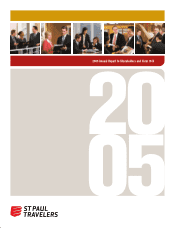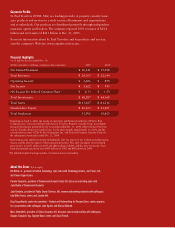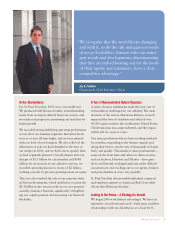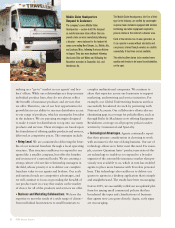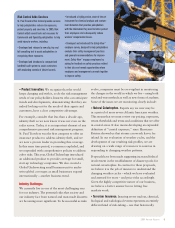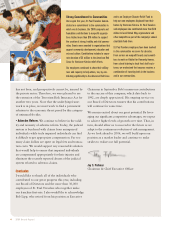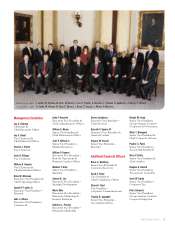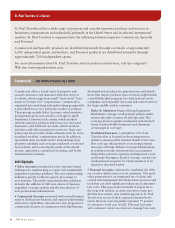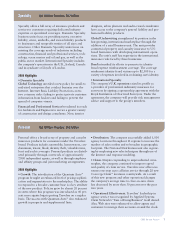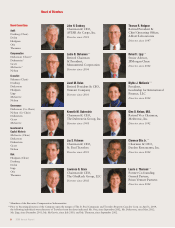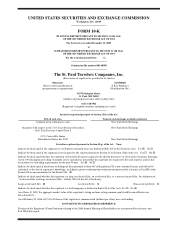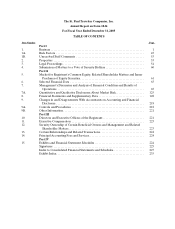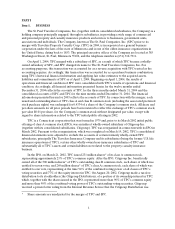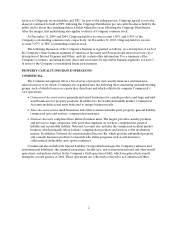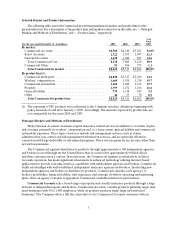Travelers 2005 Annual Report Download - page 5
Download and view the complete annual report
Please find page 5 of the 2005 Travelers annual report below. You can navigate through the pages in the report by either clicking on the pages listed below, or by using the keyword search tool below to find specific information within the annual report.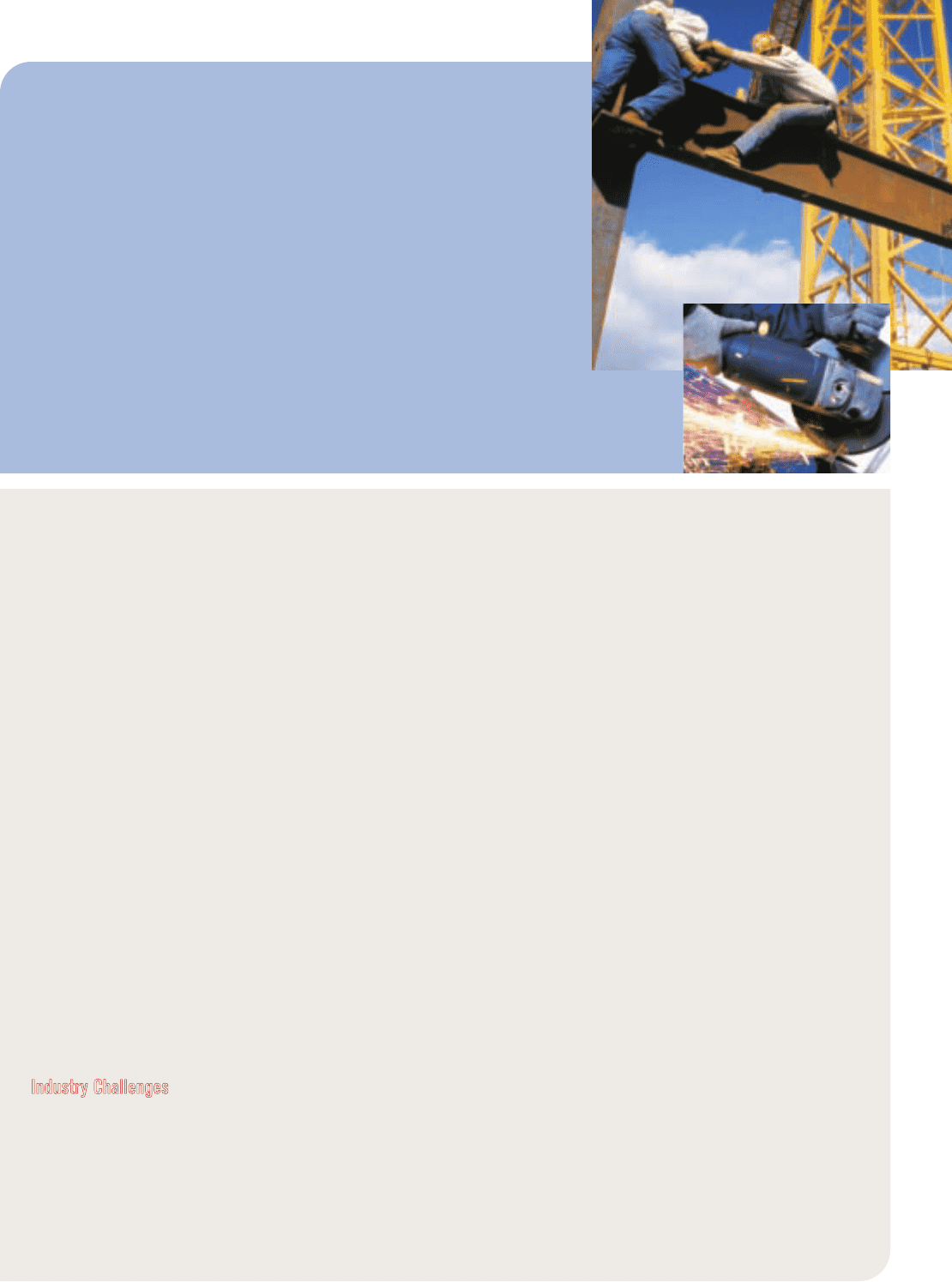
2005 Annual Report 3
• Product Innovation. We recognize that the world
keeps changing and with it, so do the risk management
needs of our policyholders. Insurers who can anticipate
trends and developments, demonstrating that they are
indeed looking out for the needs of their agents and
customers, have a clear competitive advantage.
For example, consider that less than a decade ago,
identity theft as we now know it was not even on the
radar screen. Today, it is an important element of any
comprehensive personal risk management program.
St. Paul Travelers was the first company to offer an
insurance product to address identity theft, and we
are now a proven leader in providing this coverage.
In this same time period, e-commerce exploded, and
we responded with comprehensive policies to address
cyber risks. This year, Global Technology introduced
an additional product to provide coverage for small,
start-up technology companies. We also created a
Global Underwriting small business unit to under-
write global coverages as small businesses expand
internationally – another business trend.
Industry Challenges
We currently live in one of the most challenging eras
for our industry. The potential risks that society and
our industry face from natural and man-made disasters
are becoming more significant. To be successful as risks
evolve, companies must be ever-vigilant in monitoring
the changes in the world in which we live – using both
tried-and-true methods as well as new forms of analyses.
Some of the issues we are monitoring closely include:
• Natural Catastrophes. Experts say we now may be
in a period of more severe Atlantic hurricane weather.
This means that we must review our pricing, exposures,
return thresholds and terms and conditions that we offer
in coastal areas. It also means developing an expanded
definition of “coastal exposure,” since Hurricane
Katrina showed us that storms can wreak havoc far
inland. In our evaluation of weather cycles, and the
development of our resulting risk profiles, we are
drawing on a wide range of resources to assist us in
responding to changing weather patterns.
Proposals have been made suggesting increased federal
involvement in the establishment of disaster pools for
natural catastrophes. In contrast to these proposals,
we believe it is the job of insurers to understand the
changing weather cycles – which we have evaluated
and assessed for years – and price risks accordingly.
Given the highly competitive nature of our business,
we believe a better answer lies in letting free
markets work.
• Terrorism Insurance. Insuring severe nuclear, chemical,
biological and radiological events represents an entirely
different kind of risk-taking – one that historically
Risk Control Adds Services
St. Paul Travelers Risk Control provides services
to help policyholders reduce risk exposures,
protect property and save lives. In 2005, Risk
Control added several tools and resources for
Commercial and Specialty policyholders to help
avoid injury to workers, including:
• Developed and released a new slip, trip and
fall consulting tool to assist policyholders in
recognizing those exposures.
• Developed and introduced a computerized
handheld audit system to assist contractors
with evaluating controls of jobsite hazards.
• Introduced a highly precise, state-of-the-art
instrument for chemical analysis and contam-
inant detection that provides policyholders
with the information they need to better protect
their employees and subsequently reduce
workers’ compensation losses.
• Developed and introduced the Safety View™
employee survey, designed to help policyholders
evaluate their safety management practices
and generate recommendations for improve-
ment. Safety View™engages employees by
asking for feedback on safety practices related
to their jobs and reveals opportunities where
employees and management can work together
to improve safety.

